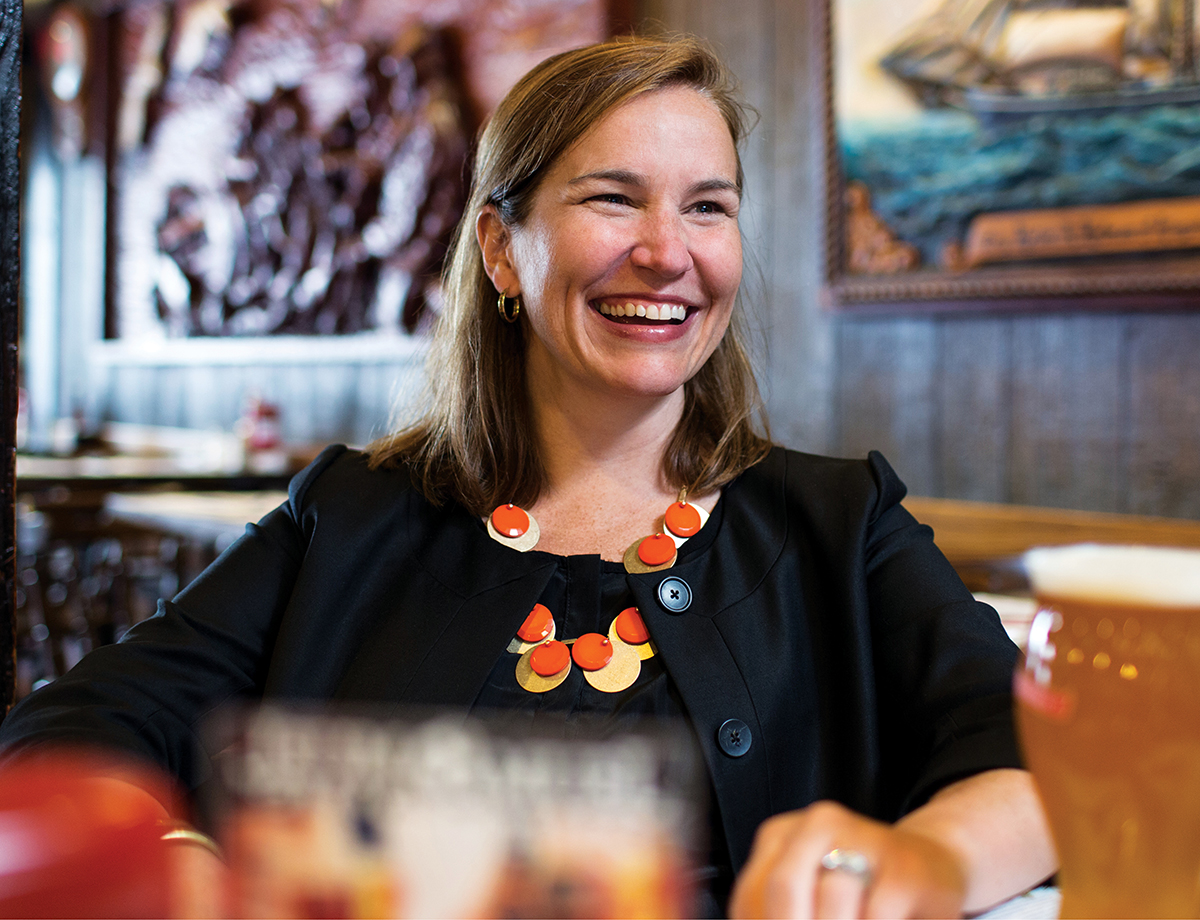Power Lunch: Liz Morningstar

Photograph by Ken Richardson
Set to open this month above the Haymarket T station, the Boston Public Market—which will host nearly 30 vendors selling food grown, fished, or produced in New England—promises to be a locavore’s paradise. The nonprofit was formed 14 years ago; Liz Morningstar, who was a White House advance staffer during the Clinton administration and then Deval Patrick’s campaign finance director, took over as the market’s CEO in 2013. She and Erick Trickey met at No Name Restaurant on the Boston Fish Pier and chatted about all things local over beer and chowder.
Tell me why we’re here.
I think about public spaces all the time because I’m trying to create one. What do public spaces say about us, where we are in time, and where we came from? The Boston Fish Pier, for example, is more than 100 years old and it’s still a working waterfront. There’s an authenticity to it in a city that’s experiencing so much growth.
The Boston Public Market will be the only regionally sourced market of its kind in the U.S. Why work so hard to be local?
By introducing an all-local model, we’re going to affect some of the supply dynamics further down the chain. We’re going to have a nice impact on the agricultural landscape because we’re creating more direct sales opportunities.
Is New England, with its brutal winters, a good place for such a venture?
Massachusetts is one of the few states in the most recent agricultural census that actually saw growth in farming. You’re seeing younger people going into farming—I think a lot of it has to do with the buy-local movement.
Why haven’t we had a local market in recent years?
The last one that opened, Quincy Market, was founded nearly 200 years ago. Local farmers came and sold what they grew. Haymarket began much the same way, but now most of its food comes from the Chelsea wholesale market [the New England Produce Center], which is where most grocery stores get their food from. It’s not typically local.
What public market served as your inspiration?
I’d say my favorite is Borough Market, in London. It’s literally built in an underpass. Imagine rabbits hanging from the ceiling with great street food sold in between.
Why did it take more than a decade to get this thing going?
Public markets [in other cities] have been there since the beginning of time. The actual land was sold from the city to the state in 1991 with the caveat that it be used for a market, but the building itself had to be built around the Big Dig infrastructure. It now has these really big vent shafts, making it an incredibly difficult space to work with.
What did you learn about red tape while working on this project?
Even something that everyone wants is still hard to do. Our building was built with federal mitigation money [as part of the Big Dig], so we had to have federal, state, and city permitting. That’s probably one of the things I’ve spent the most amount of time on.
Did this winter’s snowstorms affect the project’s timeline?
Yes. There was an entire week when no concrete trucks were coming into Boston, right when we were pouring the floor. The harvest season is going to start later. We’re not going to see tomatoes until late in the season. Maple syrup is having a really tough time this year. We might get our strawberries and our other berries in a bit later. But that’s all. I think everybody is hungry for summer, and that’s a good thing for us.


